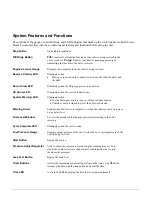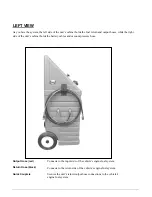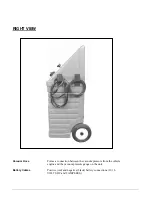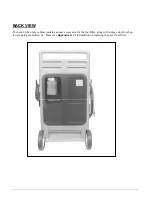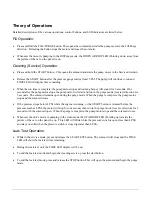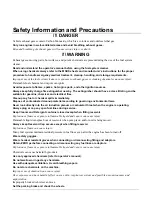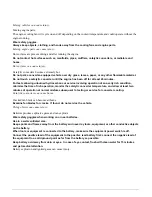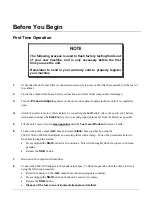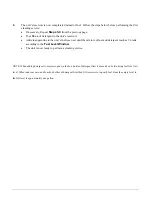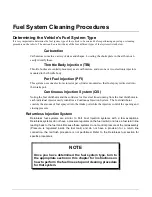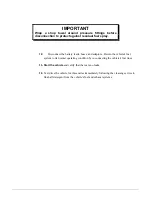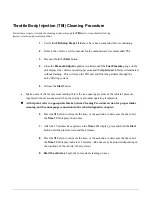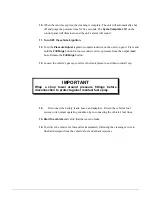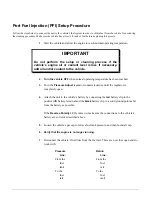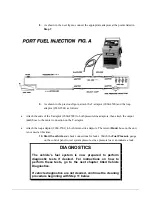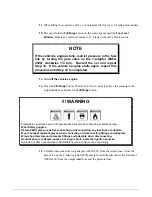
Fuel System Cleaning Procedures
Determining the Vehicle's Fuel System Type
It is very important to determine the fuel system type of the vehicle to be serviced before performing any setup or cleaning
procedure on the vehicle. The unit can be used with any of the four different types of fuel systems listed below:
Carburetion
Carburetors come in a variety of sizes and shapes. Locating the choke plate in the air horn can
easily identify these.
Throttle Body Injection (TBI)
Throttle bodies are centrally mounted, as are carburetors, and use one or two electronic injectors
mounted in the throttle body.
Port Fuel Injection (PFI)
This system uses one electronic injector per cylinder, mounted so that fuel spray is directed into
the intake port.
Continuous Injection System (CIS)
Noting the fuel distributor and the solid steel or flex steel lines running from the fuel distributor to
each individual injector easily identifies a Continuous Injection System. The fuel distributor
controls the amount of fuel sprayed into the intake port while the injectors control the opening and
closing pressure.
Returnless Injection System
Returnless fuel systems are similar to Port Fuel Injection systems with a few exceptions.
Returnless systems do not have a pressure regulator on the fuel rail & do not use a fuel return line
leading back to the fuel tank. Because these systems do not control pressure at the rail assembly
(Pressure is regulated inside the fuel tank) and do not have a provision for a return line
connection, the rail flush procedure is not performed. Refer to the Returnless fuel section for
specific procedures.
NOTE
Once you have determined the fuel system type, turn to
the appropriate section in this chapter for instructions on
how to perform the fuel line setup and cleaning procedure
for that system.




